If you think lead in tap water is a thing of the past, think again.
Aging pipes, old fixtures, and forgotten service lines are still quietly putting families at risk — sometimes without a single warning sign.
But here’s the good news: testing your water is easier than ever, and if lead shows up, there are smart, affordable ways to fix it for good.
Let’s break it down — one simple step at a time. 🧠
🧠 Quick Takeaways:
- ✅ Lead Has No Smell, Taste, or Color – You won’t spot it without a test
- ✅ Old Pipes Are the Usual Suspect – Especially homes built before 1986
- ✅ Kids, Babies, and Moms-to-Be Are Most at Risk – Even tiny amounts matter
- ✅ You Have Options – Reverse osmosis, carbon filters, and distillers all work
- ✅ Testing Is Key – Certified lab kits give the clearest, most reliable answers
🔍 What Exactly Is Lead, Anyway?

Lead’s been around forever — used in pipes, paint, gasoline, and all kinds of everyday stuff. Back then, nobody realized just how dangerous it could be.
Today? We know better. A lot better.
Lead is a heavy metal that’s — strong, flexible, and sneaky.
It can show up where you least expect it — like old plumbing solder, brass fixtures, and aging service lines underground.
- 💬 Quick Fact: Even copper pipes can be guilty if they were sealed with old-school lead solder.
- 🧠 Good to Know: Lead doesn’t dissolve into water easily — it leaches from pipes when the water chemistry isn’t perfectly balanced.
That’s why older homes, especially those built before 1986, are at higher risk.
👉 Want a deeper dive? See the common signs of lead in tap water.
🩺 Why Lead in Water Is a Big Deal
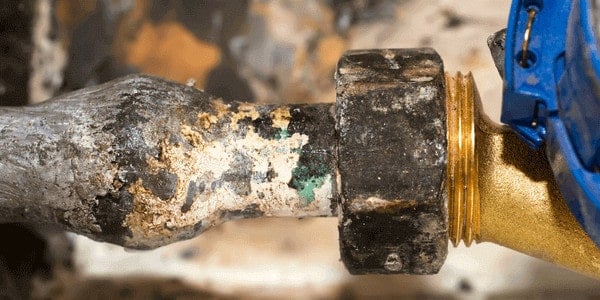
Lead isn’t something you can see, smell, or taste — but it definitely leaves its mark.
Even a small amount can quietly chip away at health — and it’s kids and expectant moms who take the hardest hit
Their growing bodies absorb lead faster and suffer more of the damage.
🚨 Long-term exposure has been linked to:
- Learning and behavior problems
- Fatigue and irritability
- Headaches and stomach cramps
- High blood pressure
- Fertility issues
- Slowed growth in children
💬 Quick Tip: According to the EPA, there’s no known “safe” level of lead exposure — even the tiniest amount can chip away at health over time.
🚰 How Lead Slips Into Your Tap Water
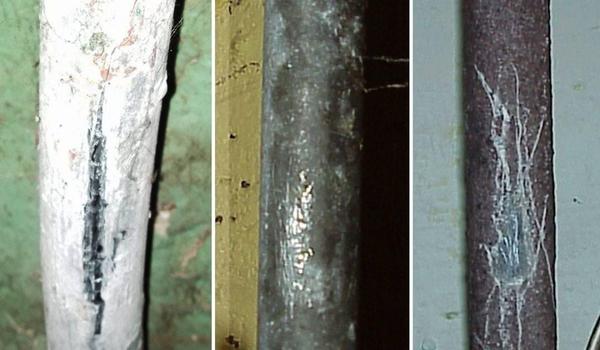
Most of the time, the water leaving your treatment plant is perfectly clean. The problem starts after it travels through miles of aging pipes, old solder joints, and outdated fixtures.
Here’s where lead tends to sneak in:
- 🔩 Aging Pipes — Homes built before the late 1980s may still have lead service lines underground.
- 🧰 Old Solder and Fixtures — Even copper pipes connected with lead-based solder can leach metals into your drinking water.
- ⚡ Water Chemistry Gone Wrong — If the water isn’t treated just right for corrosion control, it can eat away at plumbing materials and pull lead into the water you drink.
💬 Quick Tip: Even if your city upgraded the main lines, old pipes inside your house could still cause problems.
🛠️ How To Test Your Water for Lead
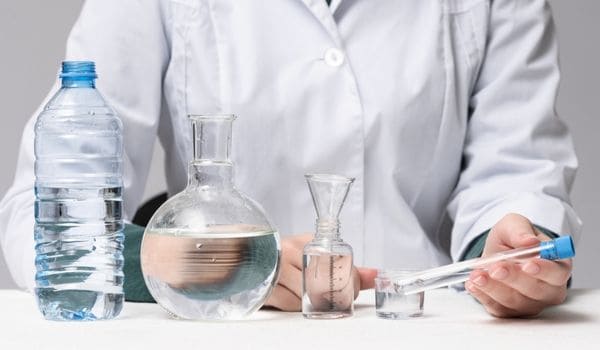
If you want peace of mind, testing is the only way to know for sure what’s coming out of your taps.
Here’s a quick breakdown of your options:
| 🧪 Test Method | ✅ Best For | ⚠️ What to Watch For |
|---|---|---|
| 🏢 Certified Lab Testing | The gold standard for accuracy and full contaminant panels | Costs a bit more; results usually take a few days |
| 🏠 Home Lead Test Kits | Quick, affordable checks (great for screening) | Not as precise; human error can throw off results |
| 🧑👷 Professional Water Inspections | Full service + expert analysis | Higher cost; scheduling required |
💡 Pro Tip: Want certified results without the guesswork? This independent water testing kit checks for lead (and more), giving you an ultra-clear snapshot of your water quality.
🧪 How To Prepare for a Lead Water Test
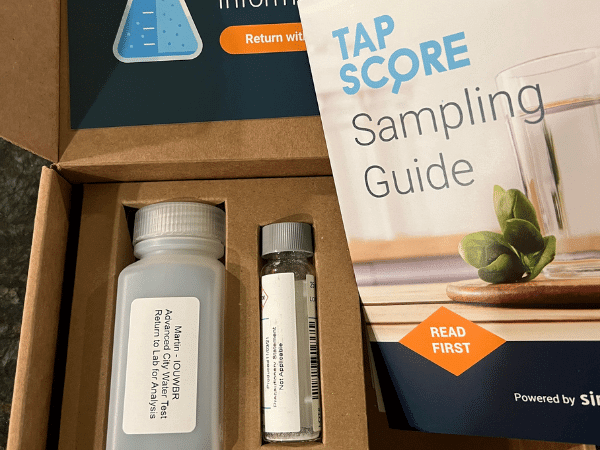
Getting accurate results starts before you even collect the water sample. A little prep work goes a long way.
Here’s how to set yourself up for success:
- 🚰 Use Cold Water Only – Hot water can artificially raise lead levels.
- ⏳ Let the Water Sit Overnight – Test first thing in the morning before any taps have been run.
- 🚿 Pick the Right Faucet – Test from the kitchen or bathroom faucet you use most often for drinking and cooking.
- 🧼 Skip Filters for the Sample – Bypass any faucet filters, softeners, or RO units — you want to test your true incoming water.
- 🧪 Follow Kit Instructions Exactly – Even small deviations can mess with your readings.
💡 Pro Tip: If you’re testing multiple faucets, label each sample carefully. It’ll make troubleshooting easier if only certain parts of your house show elevated levels.
📈 How To Read Your Lead Test Results
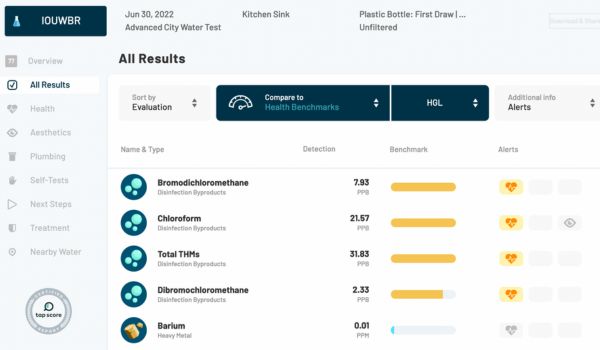
Once you get your test results back, it’s normal to wonder — what now? Here’s how to break it down without feeling overwhelmed:
| 🧪 Result Range | ⚡ What It Means | ✅ Action Steps |
|---|---|---|
| 0 ppb | Safe | No action needed, but consider retesting yearly |
| 1–5 ppb | Low | Still safer than most, but keep an eye on it over time |
| 6–14 ppb | Elevated | Take action — install a certified filter, retest regularly |
| 15+ ppb | High | Immediate action recommended — filtration + public health consultation |
💬 Good to Know: Even low levels of lead can be harmful, especially for kids and pregnant women. Health experts agree: there’s no safe level of lead exposure.
🚰 Reducing Your Risk After Testing

If your test results show even a little lead, it’s time to take action. Here’s what experts recommend right away:
- 🛠️ Use a Certified Filter: Look for a system certified for lead removal (NSF/ANSI Standard 53 or 58).
- 🚿 Switch to Cold Water Only: Hot water dissolves metals faster — always use cold water for drinking and cooking.
- 🔄 Flush Your Pipes: Run your tap for 1–2 minutes each morning to clear out sitting water.
- 🍼 Use Bottled Water for Babies: Infants are especially vulnerable — better safe than sorry.
💬 Pro Tip: Even if your water tested low, these steps add an extra layer of protection — and habits like using cold tap water are free.r drinking water is a better long-term solution than replacing your home’s pipes or buying costly, environmentally disastrous bottled water. Let’s look at the options.
🛡️ Best Water Filters for Lead Removal

Testing gives you the answers—but filtering gives you peace of mind. If your lead levels aren’t zero, it’s time to choose the right filter. Here’s a quick breakdown of what actually works—and a shortcut to our favorite systems.
| 🧪 Filter Type | 🏠 Best For | ⚡ Pros |
|---|---|---|
| 💧 Reverse Osmosis (RO) | 🔹 Under-sink drinking water systems | ✔️ Removes 99%+ of lead and other heavy metals |
| 🛀 Solid Carbon Block Filters | 🔹 Faucet, pitcher, countertop units | ✔️ Affordable, reduces chlorine and lead |
| 🔥 Distillation Systems | 🔹 Countertop small batch systems | ✔️ Purifies almost everything, including lead |
| 🛡️ KDF + Carbon Combo Filters | 🔹 Whole-house filtration systems | ✔️ Removes lead, chlorine, and bacteria at every tap |
💬 Pro Tip: Not all filters are created equal. If you want a shortcut to the best options, check out our guide to top-rated lead removal filters — tested, reviewed, and ready for action. 🔥
🧼 Final Thoughts
Lead contamination isn’t something you can see, smell, or taste — but that doesn’t mean it should go unnoticed. A simple water test goes a long way : )
Whether you’re installing a faucet filter, investing in reverse osmosis, or simply flushing your pipes regularly, every step you take brings more peace of mind.
🛡️ Clean water isn’t a luxury — it’s a basic right. And now, you’ve got the knowledge (and the tools) to protect yours for the long haul. 💧✨
 88 people found this helpful. Was this guide helpful to you?
88 people found this helpful. Was this guide helpful to you? 

